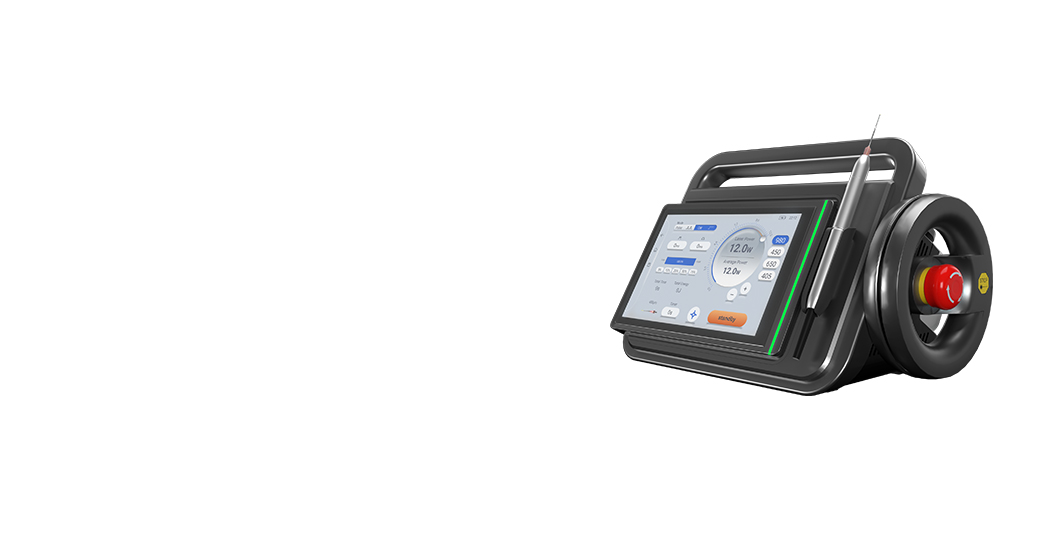Photodynamic Therapy in Dentistry
Antimicrobial Photodynamic Therapy (A-PDT) is a cutting-edge treatment increasingly adopted in dental care for its efficacy in managing oral infections such as periodontitis, peri-implantitis, and dental caries. This therapy employs a combination of a photosensitizing agent, specific light wavelengths, and oxygen to generate reactive oxygen species (ROS), which effectively target and destroy microbial cells. A-PDT is favored in dental practices due to its non-invasive approach, minimal risk of antibiotic resistance, and broad-spectrum antimicrobial properties.
Principles of A-PDT
A-PDT operates through a well-coordinated interaction between three key components:
-
1. Photosensitizer:
Applied directly to the affected oral tissues, it selectively binds to the microbial biofilm.
-
2. Light Source:
A laser or LED emitting light at a wavelength tailored to the photosensitizer's absorption spectrum.
-
3. Oxygen:
Naturally present in the tissues, it reacts with the activated photosensitizer to produce ROS.
Upon exposure to the specific light wavelength, the photosensitizer is activated, transferring energy to nearby oxygen molecules to generate ROS. These ROS induce oxidative damage to the microbial cell walls and DNA, effectively eradicating pathogens within the oral cavity.
Advantages of A-PDT
-
A-PDT is particularly effective in disrupting biofilms, commonly found in periodontal diseases and often resistant to conventional treatments.
-
2.Minimally Invasive:
This non-surgical therapy is ideal for patients seeking less invasive treatment options.
-
3.Reduced Risk of Antibiotic Resistance:
By targeting multiple cellular components simultaneously, A-PDT significantly lowers the risk of developing resistance compared to traditional antibiotics.
-
4.Promotes Healing:
A-PDT not only treats infections but also accelerates healing and can be integrated with other dental treatments for enhanced outcomes.
Precautions
-
1.Photosensitivity:
Patients may experience temporary photosensitivity post-treatment. It is recommended to avoid excessive light exposure in the treated area for 24-48 hours.
-
2.Precise Dosage:
The concentration of the photosensitizer and the light dose must be carefully controlled to maximize effectiveness and minimize potential tissue damage.
-
3.Patient Suitability:
A-PDT may not be suitable for individuals with certain conditions, such as porphyria, or those on photosensitizing medications.



